DEFINITION OF TERMS
- KEYSTONE means they are listed by National Wildlife Federation as core plants for a wildlife garden in my ecoregion (Ecoregion 8).
- NOT QUITE NATIVE means they are slightly out of range but adjacent to NYS as determined by GoBotany and NY Flora Atlas.
- Otherwise the plant is a NY-native or native to the area noted.
KEYSTONE: Pussy willow (Salix discolor)
One of my favorites shrubs. I’m not sure why. Perhaps because it’s one of the first to “flower” and to provide nectar for bees. Maybe because it seems to be so photo-worthy. Maybe because by this time of year, we all have cabin fever …
Technically, it is supposed to be in a wet location, but I’m growing it successfully in regular garden soil. The only accommodation we’ve made is to direct the house’s down spout in the general direction of the plant.
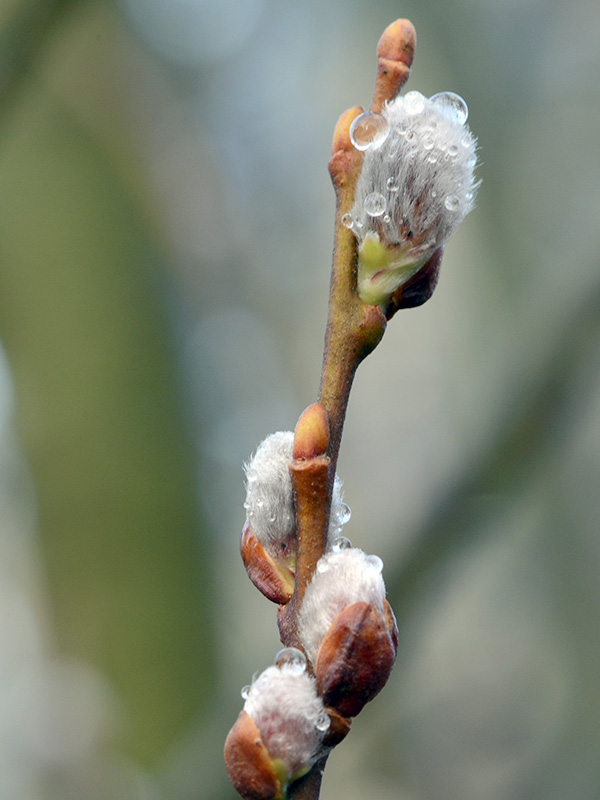
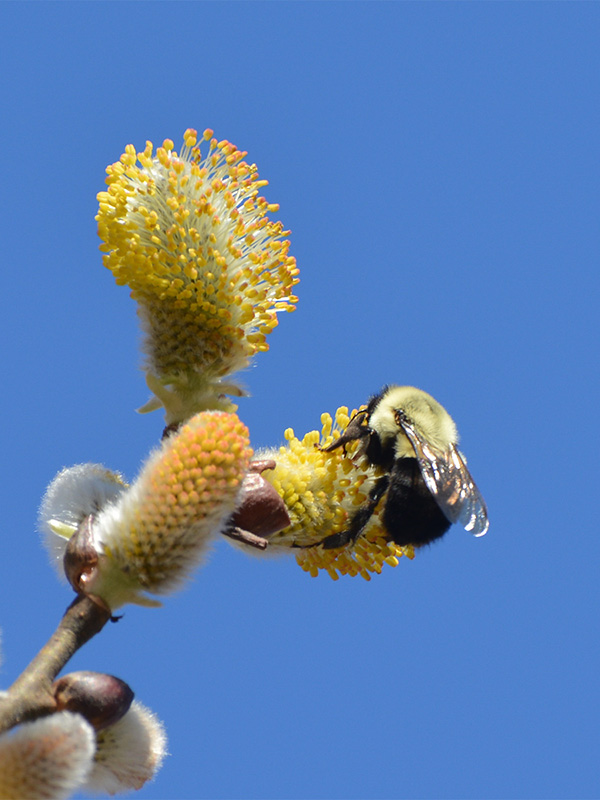
The gray catkins are nice, but the nectar value for insects starts when the catkins flower. The bees can hardly wait!
I find them even more interesting in this stage, and there’s the added bonus of seeing the bees getting nectar from them. This early spring source of nectar and pollen is especially important for bumble bee queens, getting ready to start the new nests. [Note: Unlike honey bees, only bumble bee queens live after the fall, so they must start new colonies each spring.]
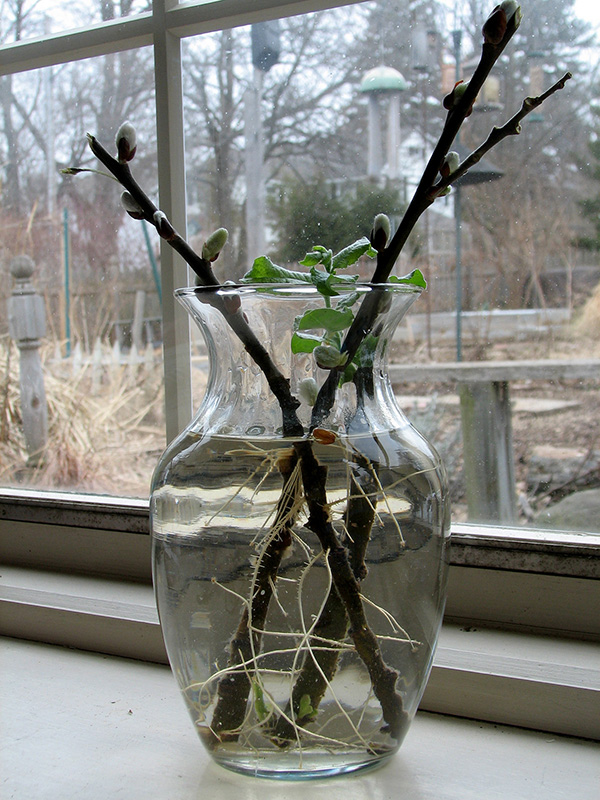
Add to that the fact that they can be easily started by taking a cutting from the shrub and rooting it in water, and this is a good plant for anyone to have. Our plant started as just such a cutting given to us by a friend.
After flowering, the leaves are an important host plant for many insects, such as the mourning cloak butterfly.
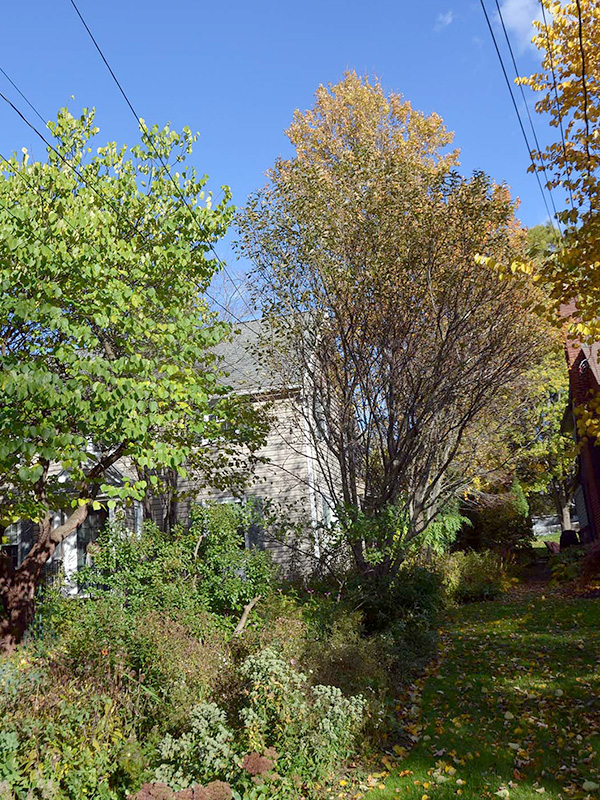
This shows the pussy willow on the right next to the redbud in our front yard
We were surprised to see how tall this shrub became — almost like an understory tree than a shrub. In fact, we had to have it pruned some to keep it away from our power line going to the house.
Wildlife: Early season harvest for birds, small mammals
Larval host: Mourning cloak, viceroy
Deer resistance: Not as palatable to deer
* SPECIAL VALUE TO NATIVE BEES **
** SPECIAL VALUE TO BUMBLE BEES **
- Learn more:
- Wildflower Center: Pussy willow
- PennState Extension: Pussy willow – A valuable native plant
- Pollinator Pathway: Native willows – Don’t overlook this beautiful pollinator superfood
Elderberry (Sambucus nigra ssp. canadensis)
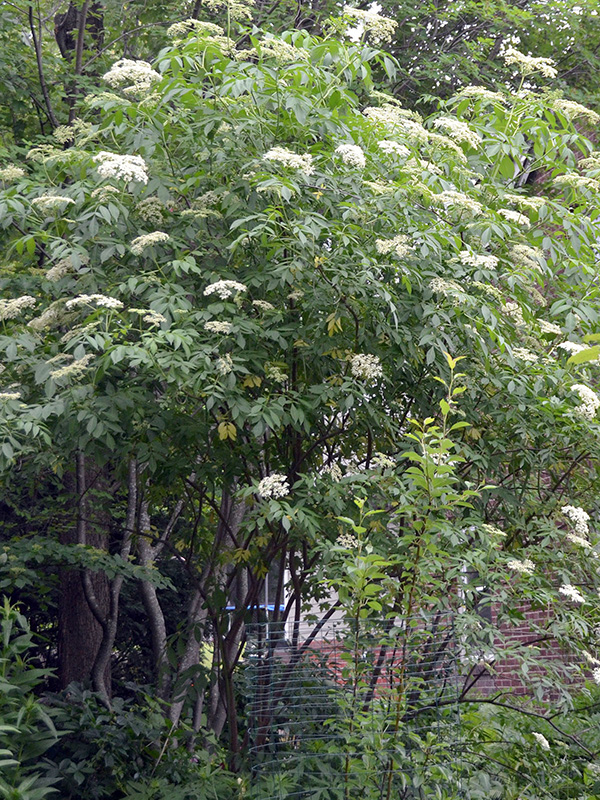
We initially bought elderberry to produce berries as a wildlife food, but we were surprised at how attractive the bush is.
It fairly quickly grew to about ten feet tall and has beautiful flowers in the spring.
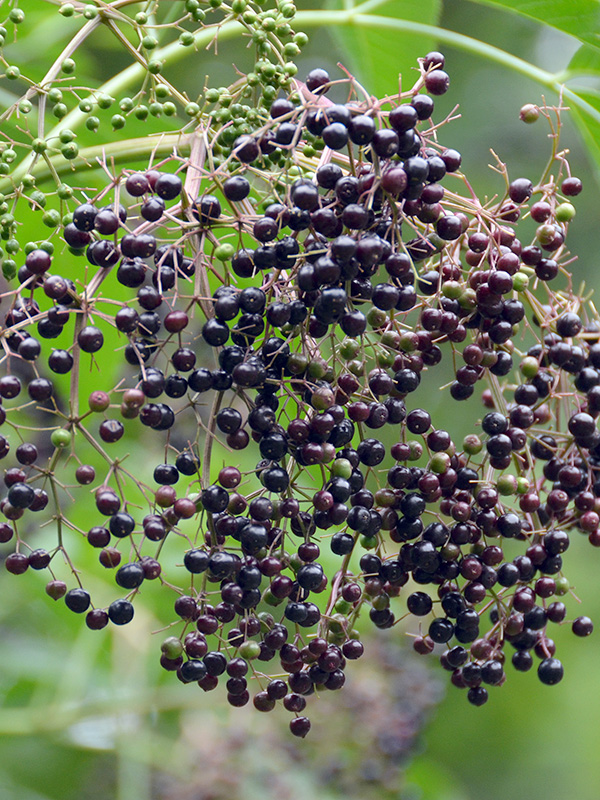
Just as the flowers are plentiful, so are the berries. The catbirds love them!
Wildlife: Berries for birds, mammals; Nectar
** PROVIDES NESTING MATERIALS / STRUCTURE FOR NATIVE BEES **
** SUPPORTS CONSERVATION BIOLOGICAL CONTROL **
- Learn more:
- Wildflower Center: Elderberry
- US Forest Service: Plant of the Week
Arrowwood viburnum (Viburnum dentatum)
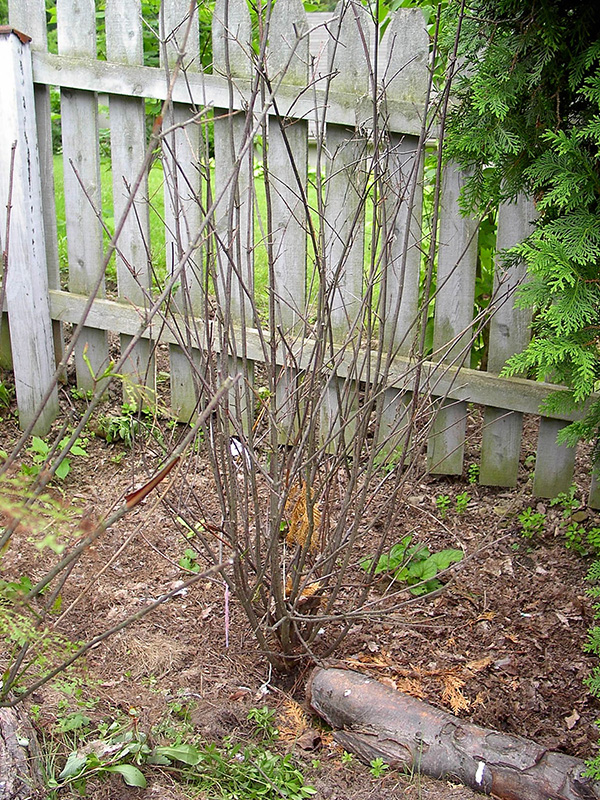
Native viburnums traditionally have been a valuable wildlife plant.
Unfortunately, the non-native viburnum leaf beetle arrived here in Central New York and devastated many viburnums, especially the native varieties.
And the beetles’ favorite plant seems to be arrowwood viburnum. We had just planted three large arrowwoods (more than $100 worth) the summer before the beetle arrived. In two years, this formerly-thriving plant was dead.
This was a vivid demonstration of how easily habitat can be lost.
Wildlife: birds, small mammals; butterflies
Larval host: Spring azure
** SPECIAL VALUE TO NATIVE BEES **
** SPECIAL VALUE TO BUMBLE BEES **
** SUPPORTS CONSERVATION BIOLOGICAL CONTROL **
- Learn more:
- Wildflower Center: Arrowwood
- Cornell: VLB project – and I participated in this project
Blackhaw (Viburnum prunifolium)

I bought this as a bareroot plant a number of years ago.
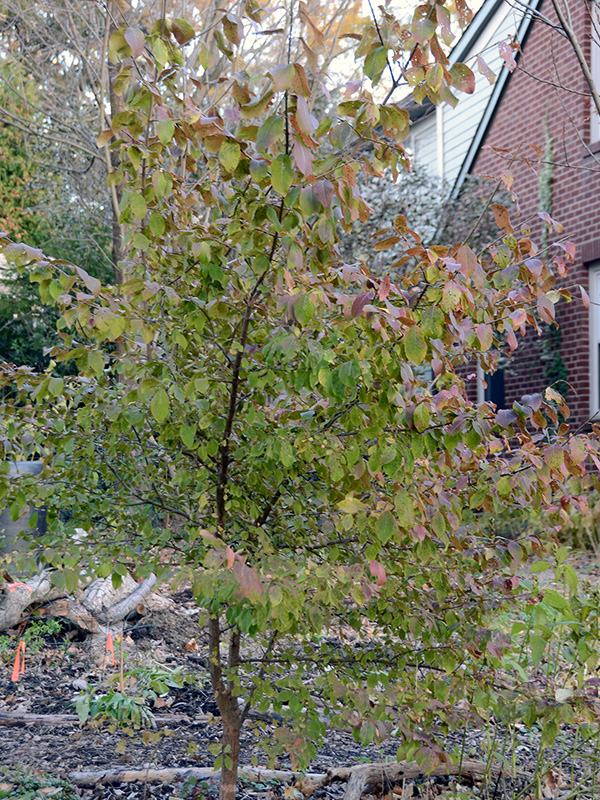
This is what our blackhaw looked like after five years. I’ve noticed a little leaf damage from viburnum leaf beetles, but it didn’t seem too bad.
Unfortunately, I planted it way too close to the path and under the large pussy willow where it didn’t get enough sun. We eventually had to remove it, though there are some sprouts still growing at the base, so its leaves might still be serving as a little host plant.
Wildlife: Berries for birds, mammals
** SPECIAL VALUE TO NATIVE BEES **
** SPECIAL VALUE TO BUMBLE BEES **
- Learn more:
- Wildflower Center: Blackhaw
